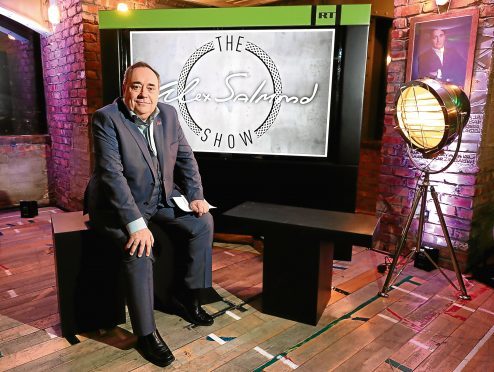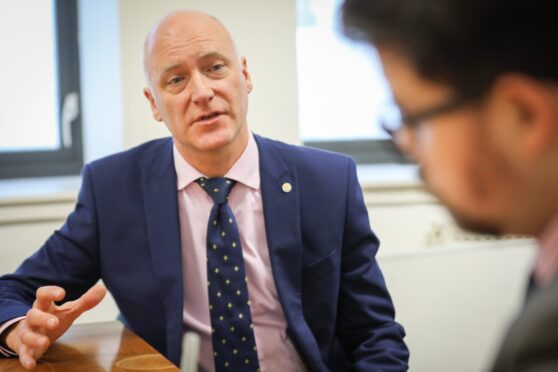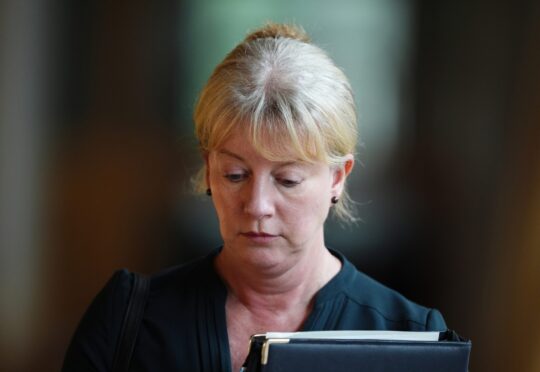Alex Salmond has thrown fresh doubt on the Lockerbie bomber’s conviction by questioning some of the evidence it was based on.
The former SNP leader, who was first minister when Abdelbaset al-Megrahi was freed, suggested it is possible the Libyan national was “wrongly convicted”.
Mr Salmond said identification evidence linking Megrahi to the atrocity is “to say the least, open to question”.
His comments have been slated by a former senior FBI investigator as “stupid”.
Megrahi, who was linked to Colonel Gaddafi’s regime, was convicted of the 1988 bombing of Pan Am flight in 2001.
The attack, which claimed the lives of 270 people, is the biggest terrorist atrocity on British soil and Megrahi is the only person to have been convicted in relation to it.
The former Gordon MP made his comments after interviewing ex-justice secretary Kenny MacAskill on the Alex Salmond Show.
Mr MacAskill announced the release of Megrahi in 2009, a move described by some as a “slap in the face” for relatives of victims.
Mr Salmond said on Thursday: “Is it possible for someone to be guilty, yet wrongly convicted? Yes it is.
“Kenny MacAskill was correct, the forensic evidence compiled by the Scottish authorities and the FBI clearly identified Libyan involvement and Malta as the place where the bomb was planted.
“Mr Megrahi was a high-ranking Libyan intelligence official on the scene at the time. This supports the charge that he, acting with others, was part of the Lockerbie conspiracy.
“However, his conviction was not just based on the strength of that evidence but on identification evidence which is to say the least, open to question.
“Back in 2009 Kenny MacAskill was aware of this, as was I as Scotland’s First Minister.”
Maltese shopkeeper Tony Gauci, a key witness, told the trial he sold Megrahi clothing that was later found wrapped around the bomb.
Dr Jim Swire, whose daughter died in the atrocity, said that identification evidence was crucial for the conviction.
“Just like Kenny MacAskill, it is a shame Alex Salmond waited until after he left office before revealing these doubts,” he said.
“I would like an explanation as to why if he felt this evidence was very suspect he didn’t push for an inquiry while he was first minister.
“For God’s sake, let’s have an objective reassessment of the evidence and the verdict. What is everyone so afraid of?”
Dick Marquise, who was the head of the FBI’s Lockerbie task force from 1988 to 1992, criticised the former senior SNP ministers for raising doubts.
He said for “two political types” to question the ID evidence when they “never spent one minute talking to or observing the demeanour of a witness during the trial” was “just stupid”.
“Based on the preponderance of all the evidence, Megrahi was rightly convicted,” he added.
A spokeswoman for the First Minister insisted there was confidence in the safety of Megrahi’s conviction.
The family of Mr Megrahi, who died in 2012, are launching an appeal against his conviction.










